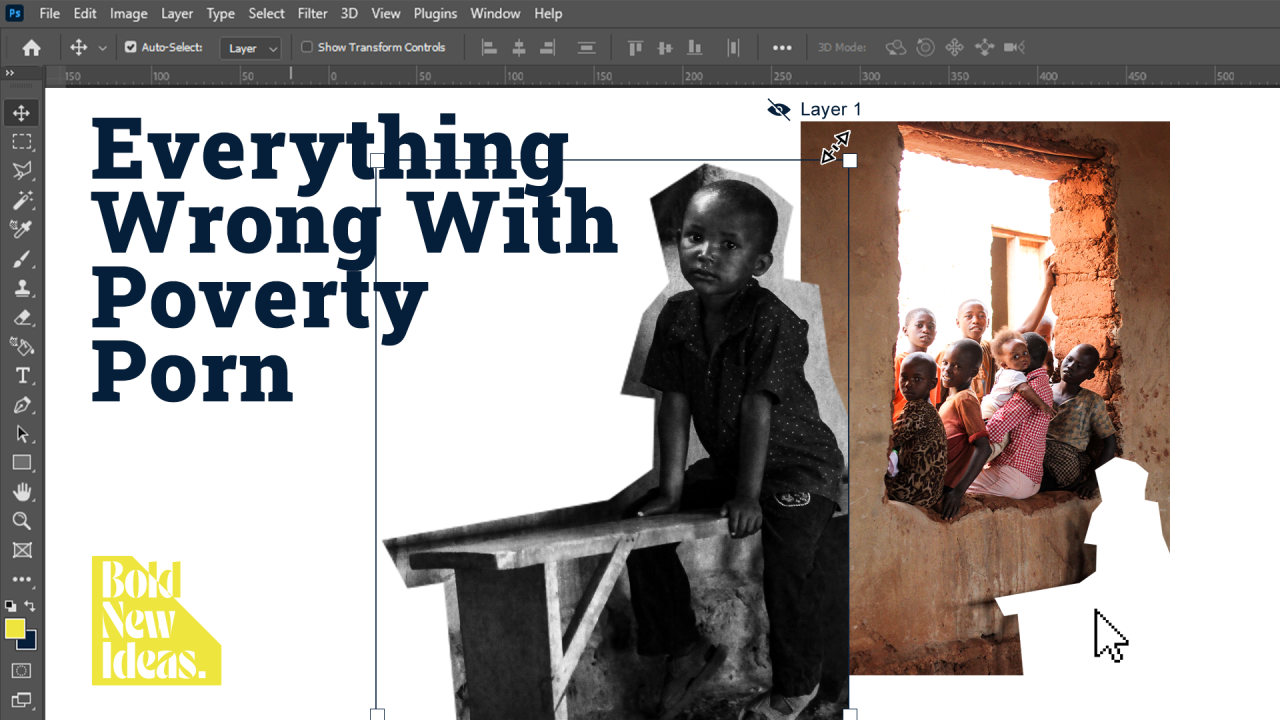
Qasim Akbar
Sept 18, 2023
Charity organizations, with their noble mission statements and well-crafted public personas, are ubiquitous in the modern world. They promise to make a difference, to alleviate suffering, and to create positive change. Yet, beneath the glittering façade lies a troubling phenomenon that plagues the industry and threatens the very essence of charity itself—poverty porn.
Poverty porn, a term as discomforting as the images it evokes, is a tactic employed by many charities and nonprofit organizations to elicit sympathy and financial support. It often involves the use of exploitative imagery, portraying individuals in their most vulnerable states—emaciated children, destitute families, and desperate faces reaching out for help. While the ostensible goal is to generate empathy and stimulate action, the consequences of this approach are deeply concerning.
Poverty porn reduces individuals and communities to objects of pity and sympathy. It strips them of their humanity, rendering them faceless victims rather than recognizing their resilience and agency in the face of adversity. The exploitation facilitated by poverty porn leads to quick-fix donations that address immediate needs but fail to address the root causes of poverty, perpetuating a cycle of dependency.
Beyond the exploitation lies the reinforcement of harmful stereotypes about marginalized communities, particularly in developing countries. Poverty porn can contribute to the problematic “white savior” complex, wherein Westerners perceive themselves as the sole solution to the problems they depict. This not only distorts the narrative but also hinders genuine empowerment.
Beneath the glossy exteriors and polished image of charity organizations lies a disconcerting reality—a stark disconnection between the opulence of corporate philanthropy and the harsh, unforgiving landscapes they aim to alleviate. Charity organizations often operate from air-conditioned offices, addressing the problems of the destitute without truly understanding the lived experiences of those they seek to assist.
To transcend the allure of poverty porn and address the underlying issues within charity organizations, a more conscientious and empowering approach is essential. Authentic narratives that prioritize the voices and experiences of those directly affected by poverty should take center stage. Transparency and responsibility should guide organizations in providing donors with clear information on fund allocation and long-term outcomes. Donors should be encouraged to engage with the root causes of poverty through advocacy, education, and support for sustainable development initiatives. Portraying individuals in need with dignity and respect is paramount, avoiding dehumanizing imagery that perpetuates stereotypes.
While poverty porn may yield immediate results, it does little to dismantle the enduring structures of poverty. Charity organizations must transcend the superficial and engage in meaningful, accountable, and empowering actions. Only then can they bridge the chasm between their grandiose promises and the stark realities faced by the impoverished, all while ensuring that the dignity and agency of those in need are upheld.